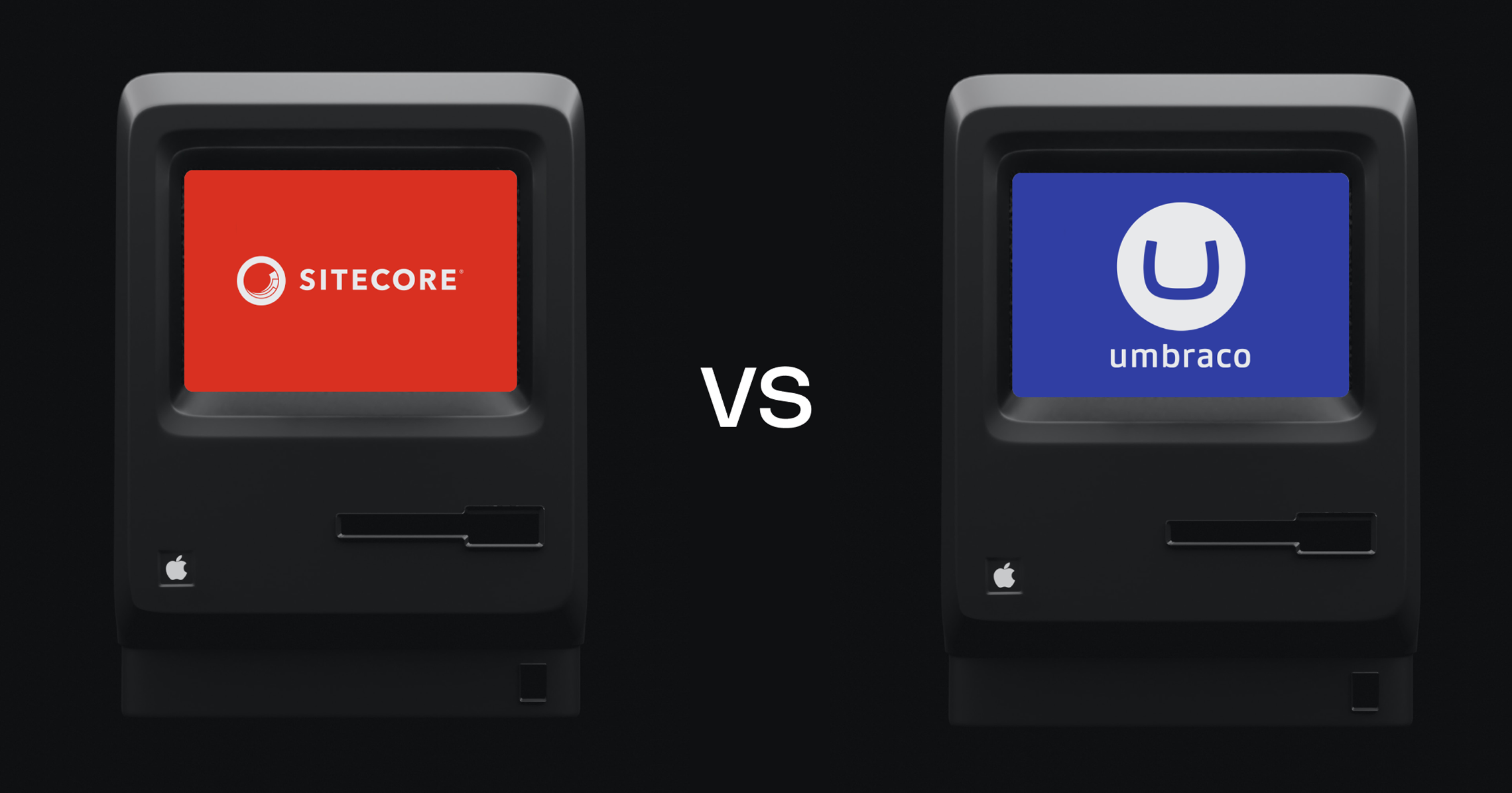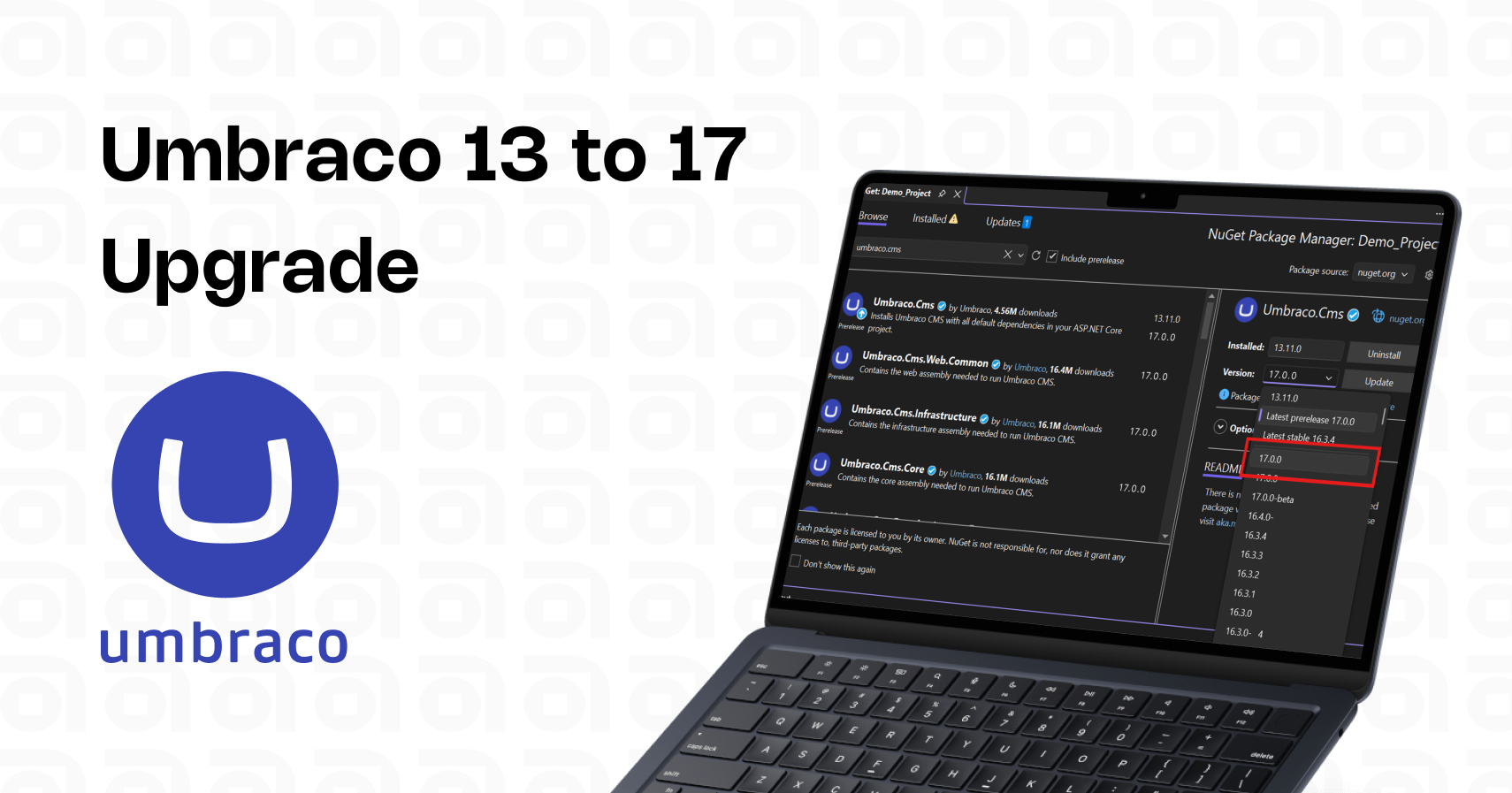
Sitecore vs Umbraco: A Practical Guide for Mid-to-Enterprise Teams
Selecting an appropriate content management system (CMS) is important for digital success, particularly for the mid-to-enterprise teams that own large websites and complex content operations. The projected revenue in the Content Management Software market is expected to reach$23.17bn by 2025. Sitecore and Umbraco stand out among the popular NET–based CMS platforms, but for very different reasons. Sitecore is a company with enterprise-grade personalization, strong integrations, and marketing automation, while Umbraco is known for its flexibility, an open-source architecture, and convenience.
Both of the platforms provide powerful functionalities, though suitable for different companies’ needs and budgets. If you are looking for a strong CMS that allows customization and adaptability, or if you are going to scale your content across global markets, understanding fundamental differences is critical.
This guide dissects Sitecore vs Umbraco on a practical level, i.e. features, cost, scalability, and applications, to guide you on making an informed decision.
Overview: Sitecore and Umbraco
|
Feature |
Sitecore |
Umbraco |
|---|---|---|
|
Type |
Enterprise-grade DXP |
Open-source CMS |
|
Built With |
.NET Framework |
.NET Framework |
|
License Model |
Proprietary |
Open-source with optional paid tiers |
|
Target Audience |
Large Enterprises |
SMEs to Mid-size Enterprises |
|
Cloud Capabilities |
Sitecore Cloud / XM Cloud |
Umbraco Cloud |
|
Cost |
High |
Low to Medium |
Core Capabilities Comparison
Below is the end-to-end comparison of core capabilities:
1. Ease of Use and Setup
Sitecore is one powerful digital experience platform that comes with much experience but also complexity. It is usually configured in a fairly deep way, and less technical users may feel bombarded at first while using the interface.
Umbraco provides a leaner, smoother experience. It is more convenient to deploy and manage, especially for a marketing team that needs to change the content fast and without overburdening IT.
2. Customisation and Flexibility
Sitecore is highly customisable. Developers are able to create complex personalisation, multi-language and multichannel experiences. Yet, the flexibility is usually bought at the expense of longer development cycles.
Umbraco offers strong customisation features for the usual website requirements. Although it does not possess out-of-the-box advanced features, the developers like its clean architecture and ability to extend.
3. Personalisation and Customer Experience
Sitecore shines in personalisation. It employs the built-in analytics and AI to drive custom experiences over channels. It’s done as a digital experience platform (DXP) and not simply a CMS.
Umbraco can be customised, but it can only reach the high level of personalisation with the help of external tools and manual input.
4. Integration Capabilities
Sitecore integrates well with enterprise systems such as CRMs, ERPs as well as marketing automation tools. It accommodates for headless architecture, GraphQL, and REST APIs for modern web applications.
Umbraco also adopts API-first methodologies and works with third-party tools, but it may need more effort of a developer for complex ecosystems.
5. Performance and Scalability
Sitecore is tailored for business that has high traffic and global content delivery. It can scale horizontally making this a good fit for multi-site, multi-region configurations.
Umbraco is capable of handling moderate traffic with the right infrastructure. Umbraco Cloud comes with scalability features, but for very big applications, you might need custom hosting arrangements.
Developer Community and Resources
Hire Sitecore Developers
The complexity of Sitecore requires that you use experienced developers who are able to take care of implementations. Enterprises often hire Sitecore developers through specialised agencies or partners. Documentation and certification programs exist but take a lot of time to complete.
Hire Umbraco Developer
Umbraco has a kind developer environment. Numerous agencies speedily hire Umbraco developers because of the open source nature of the CMS and less learning difficulty. The community that surrounds Umbraco is thriving and open.
Cost and Licensing
|
Criteria |
Sitecore |
Umbraco |
|---|---|---|
|
License Fee |
Expensive |
Free (Open-source) |
|
Hosting |
Cloud and On-premise |
Cloud and On-premise |
|
Total Cost of Ownership |
High |
Low to Medium |
When budget is a major constraint, Umbraco wins. Sitecore justifies its cost with all-in-one enterprise but does not become cost-effective for small and low budget teams.
Use Cases
|
Use Case |
Recommended Platform |
|---|---|
|
Global Enterprise Website |
Sitecore |
|
Marketing Personalisation |
Sitecore |
|
Mid-size B2B/B2C Website |
Umbraco |
|
Quick Go-to-Market Projects |
Umbraco |
|
Digital Experience Platform Needs |
Sitecore |
|
Budget-Conscious CMS Implementation |
Umbraco |
Final Verdict: Which One Should You Choose?
Choose Sitecore if:
- You are a large enterprise and your requirements are very complex.
- You require high level personalisation and analytics.
- You can afford to pay for the total cost of ownership.
- You already are using Microsoft-based enterprise systems.
Choose Umbraco if:
- You are a mid-sized business or a digital agency.
- You need a flexible and low cost solution.
- You are fond of open source and quicker deployment.
- Your project has not many personalisation needs.
Conclusion
Both Sitecore and Umbraco are competent platforms but they are for different scale and purposes.
Sitecore ensures enterprise-level performance and scalability as well as digital experience management. Umbraco is agile, cost effective, easy to use, and suitable for teams that would desire quick deployments and flexibility.
In the case you are planning to roll out or migrate to either of the two platforms, it is wise to hire Sitecore developers or hire Umbraco developers to run a successful deployment.
The selection of the right CMS is not only about the features. It is about making the platform work by accommodating it to your team’s capability and business goals in view with the long-term vision.
Related Blogs


Read More

Read More

Read More
